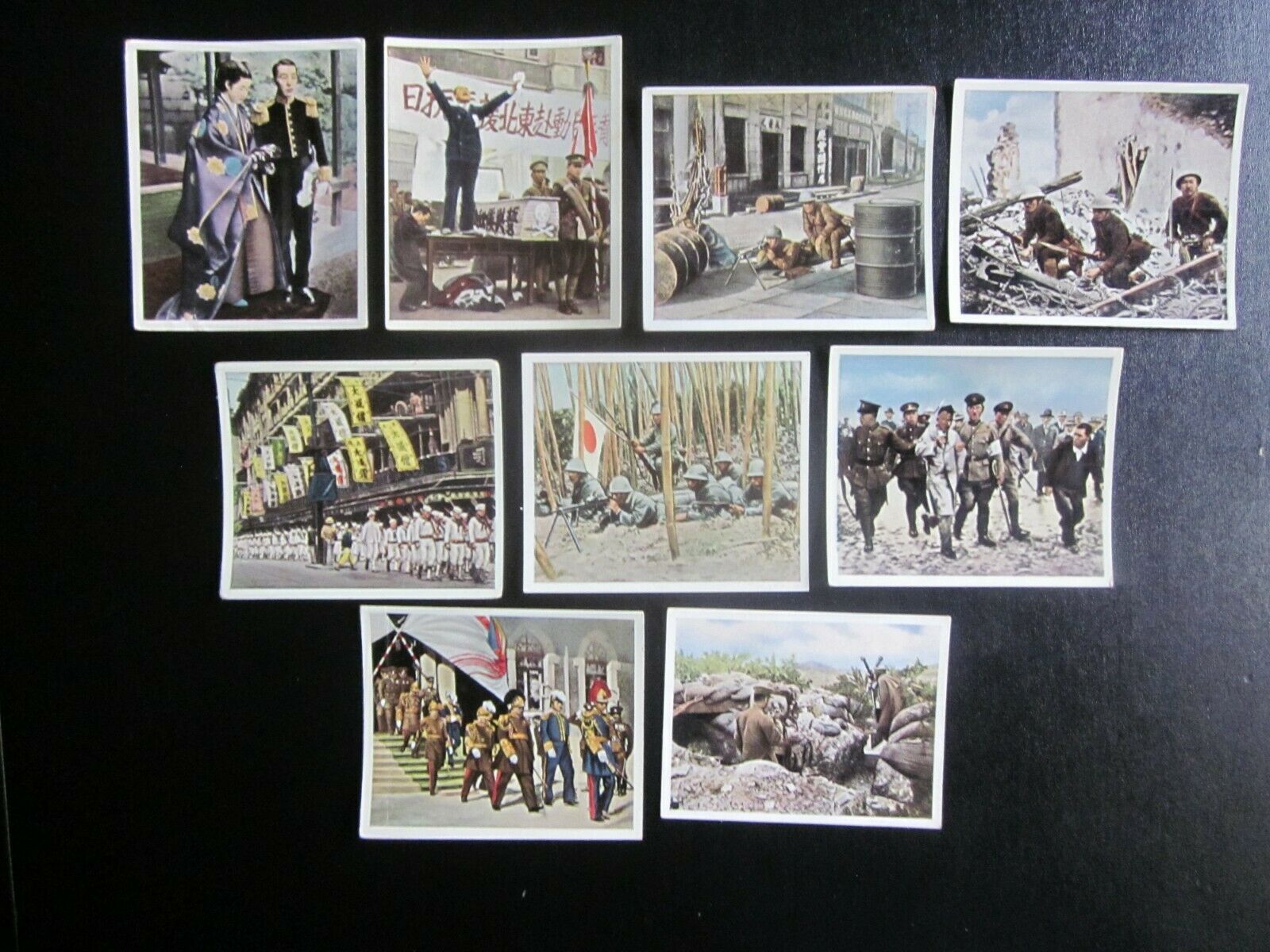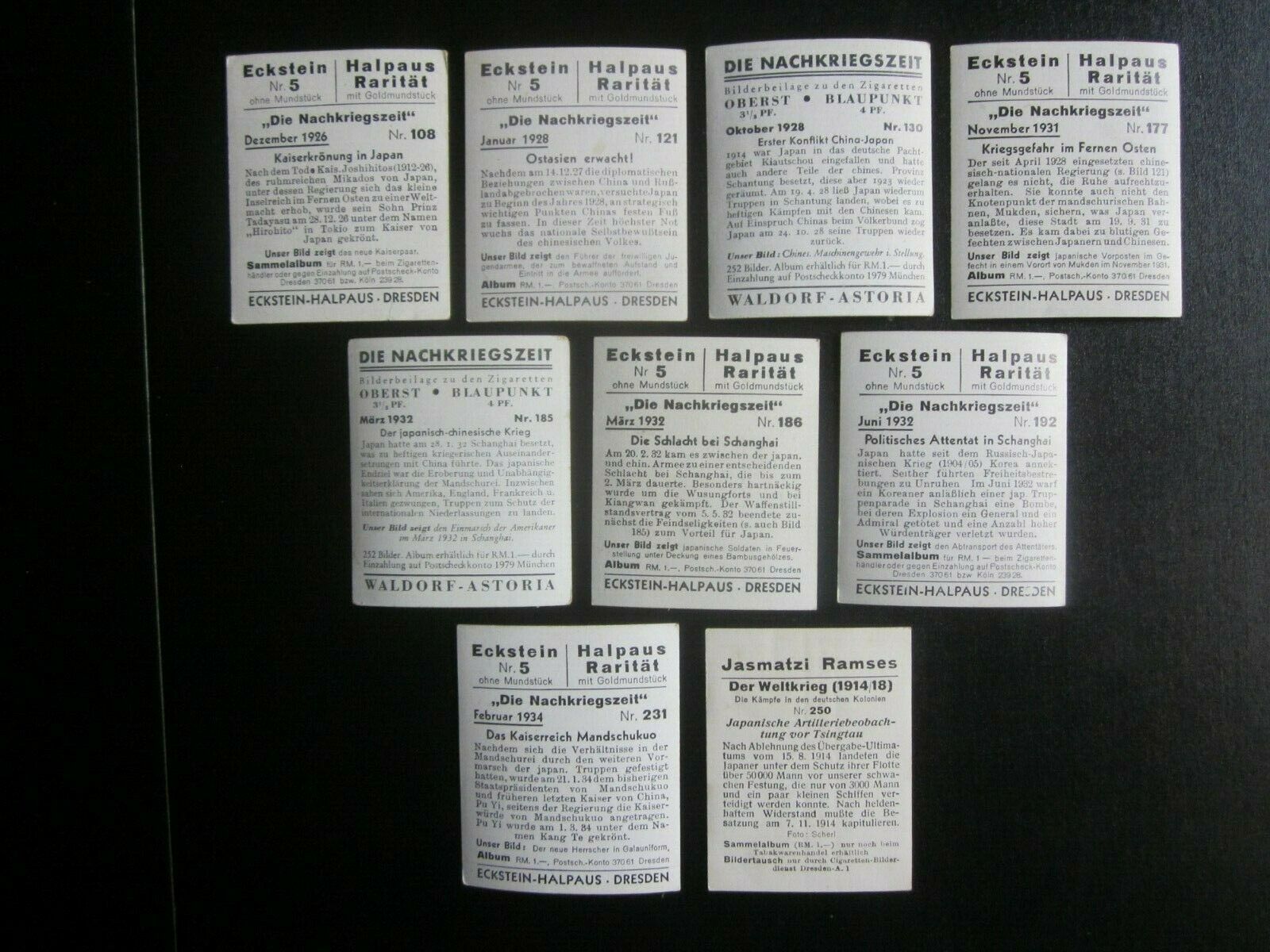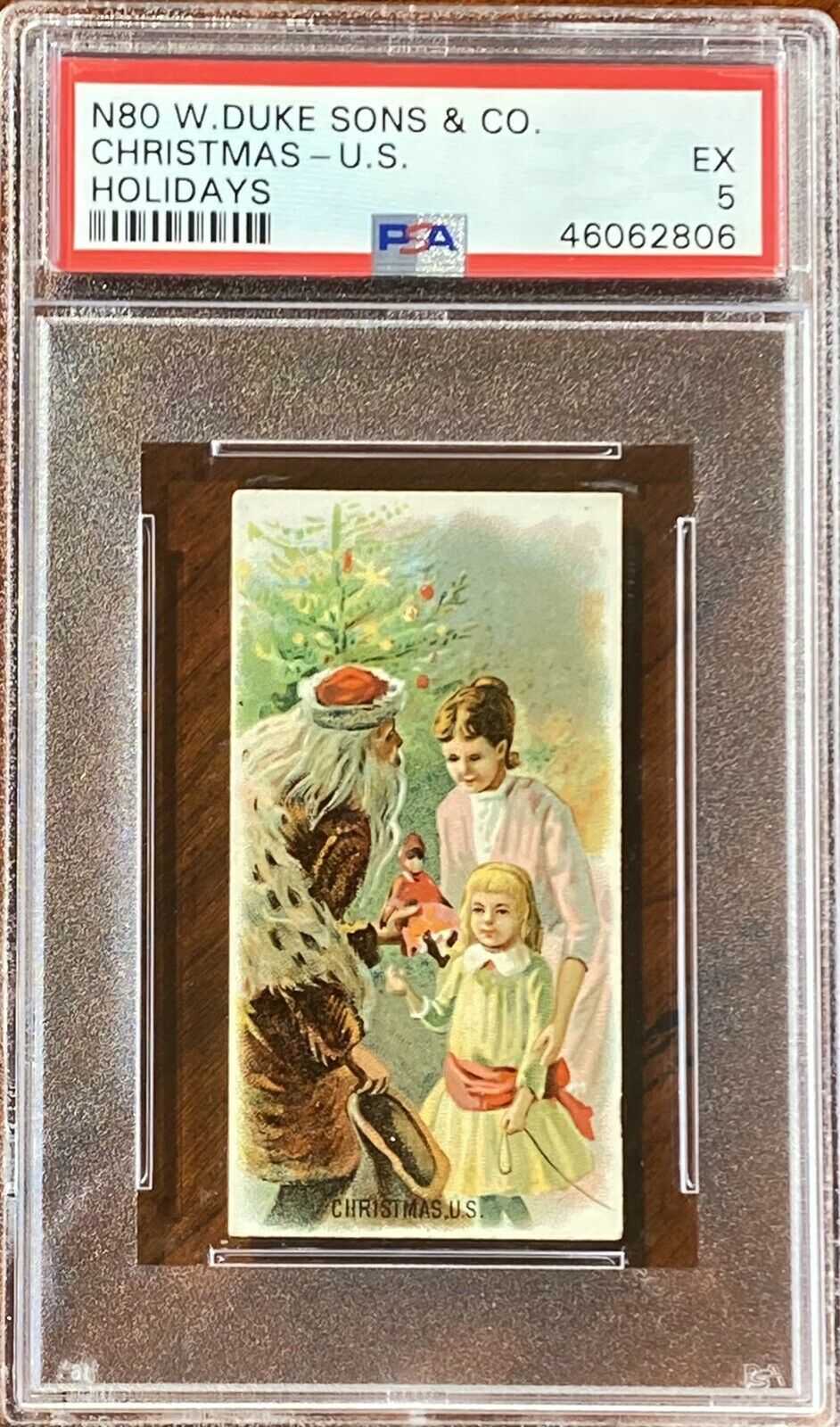-40%
9 German cig. cards: Far East Fighting (incl. China/Japan), issued 1937
$ 1.3
- Description
- Size Guide
Description
Offered here are 9 original German cigarette cards of developments in the Far East between 1914 and 1933, issued in 1937 by a number of cigarette companies, including the Eckstein-Halpaus Cigarette Co. of Dresden for the albumDie Nachkriegszeit
(The Postwar Era). One of the cards is from the series
Der Weltkrieg
(The World War) and was issued in 1937. Pictured here are:
No. 108:
Crowning the New Emperor of Japan (December 1926). After the death in 1926 of Emperor Taisho (1912-1926), the famous “Mikado”, under whom Japan became a world power, his son, Prince Hirohito became emperor on December 28, 1926 in Tokyo. Pictured here is the new emperor and his wife.
No. 121:
East Asia Awakens! (January 1928). After diplomatic relations were severed between China and Russia on December 14, 1927, Japan attempted to seize several strategic points in China. As a result, strong feelings of nationalism arose in the Chinese populace. Pictured here is the leader of the Volunteer Youth Army that planned to offer armed resistance to the Japanese occupation. They were encouraged to join the regular Chinese army to do so.
No. 130:
The First Conflict Between China and Japan (October 1928). In 1914 Japan attacked German holdings in China and also occupied other areas of the Chinese province of Shantung. Japanese troops withdrew from these areas in 1923. However, on April 19, 1928 Japan once again landed troops in that province that led to fierce fighting with the Chinese. China protested to the League of Nations, forcing Japan to withdraw on October 24, 1928. Pictured here is a Chinese machine gun position.
No. 177:
The Danger of War in the Far East (November 1931). The Chinese government that took office in April 1928 was not able to provide stability in the land. It was also not able to secure the important rail connection town of Mukden in Manchuria from being occupied by Japanese troops. Japan occupied the city beginning on September 19, 1931 which led to bloody fighting between Japanese and Chinese troops. Pictured here are Japanese troops in a suburb of Mukden in November 1931.
No. 185:
The Sino-Japanese War (March 1932). On January 28, 1932 Japan occupied the city of Shanghai which caused bloody fighting between Japanese and Chinese troops. Japan’s goal was to make Manchuria a territory independent of Chinese rule. As the crisis became more serious, the U.S., England, France and Italy sent troops to protect their diplomatic missions and other international representatives there. Pictured here are American troops marching into Shanghai in March of 1932.
No. 186:
The Battle of Shanghai (March 1932). On February 20, 1932 a decisive battle was fought between Japanese and Chinese troops that lasted until March 2
nd
. The fighting was particularly fierce around the Wusung Forts and at Kiangwan. An armistice was signed on May 5
th
ending the fighting, with Japan holding the most advantageous positions. Pictured here are Japanese soldiers under cover of a bamboo grove.
No. 192:
A Political Assassination in Shanghai (June 1932). After the Russo-Japanese War (1904-1905) Japan had annexed the Korean Peninsula. The desire of the Koreans to regain their independence was the source of constant unrest there. In June of 1932 at a parade of Japanese troops in Shanghai a Korean man threw a bomb, killing a Japanese general and an admiral and wounding many other high-ranking officers and officials. Pictured here is the assassin being taken away by Japanese authorities.
No. 231:
The Manchurian Empire is Established (February 1934). After the advance of Japanese troops in Manchuria secured Japan’s position there, the Japanese government offered Pu-Yi, the President of Manchukuo and the former Emperor of China, the Imperial Crown of the new nation on January 21, 1934. Pu-Yi was crowned Emperor on March 1, 1934 with the new name Kang Te. Our picture shows the new Emperor in his gala uniform.
No. 250
[From the Series:
Der Weltkrieg
]
:
A Japanese Artillery Observer Position Outside Tsingtao (Fighting in the German Colonies, 1914). After Germany rejected the surrender ultimatum of the Japanese of Aug. 15, 1914 to surrender our colony in China to them, they sent 50,000 men and their fleet to attack our 3,000 men and a couple of small boats. With great bravery and courage, our troops held out until Nov. 7, 1914 before surrendering.
Each card measures 2 and 3/8 inches by 2 inches.
With multiple purchases, please wait for invoice for reduced shipping.










